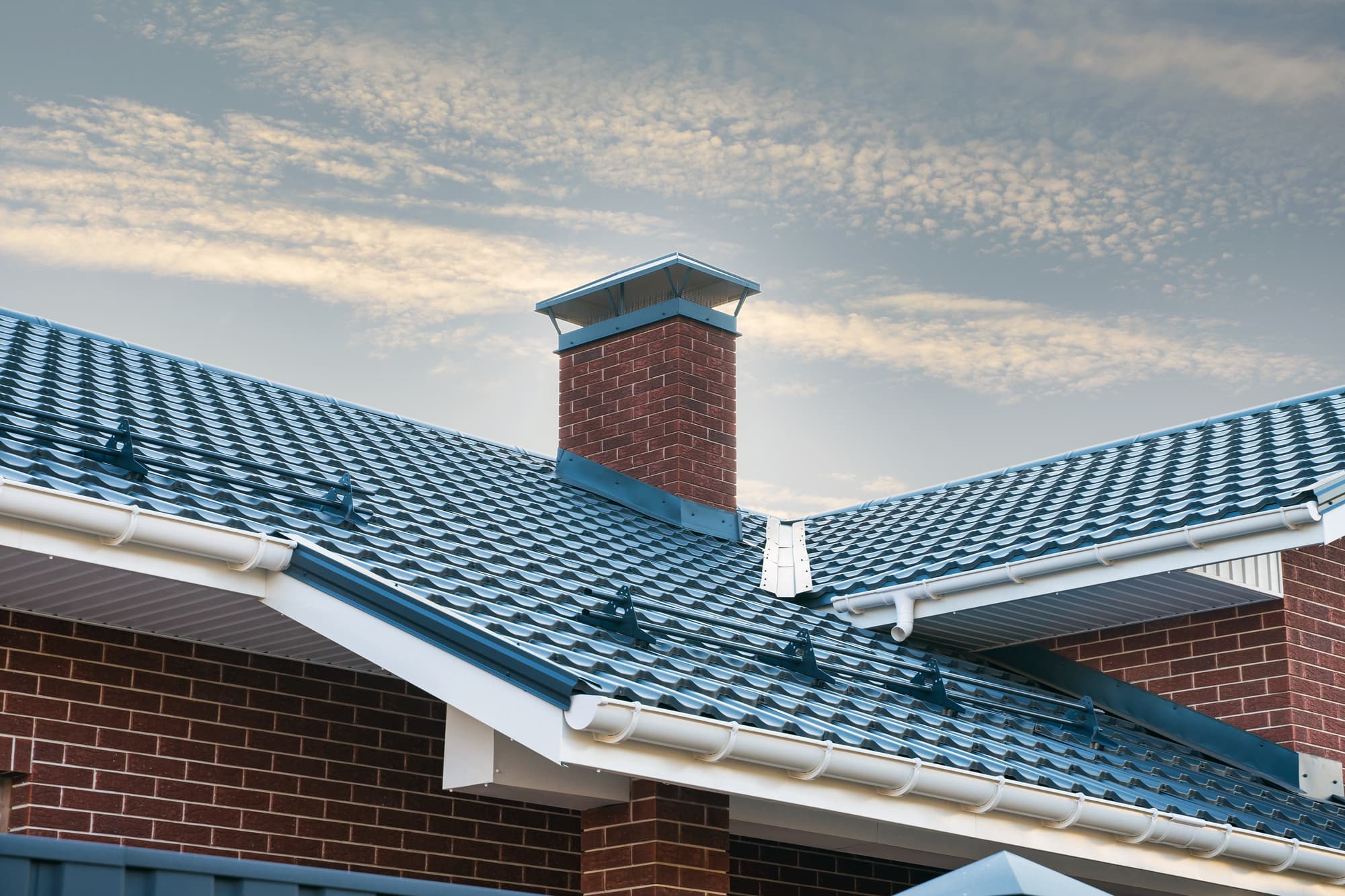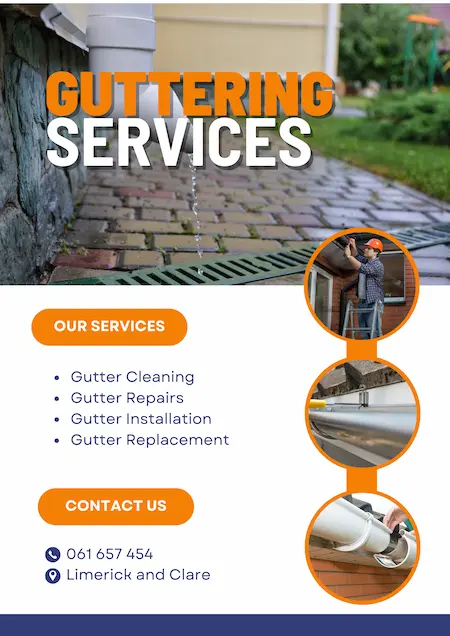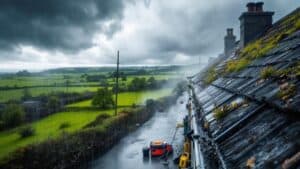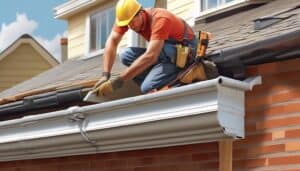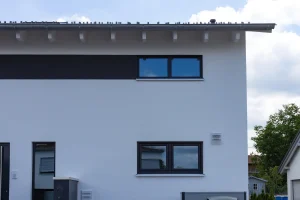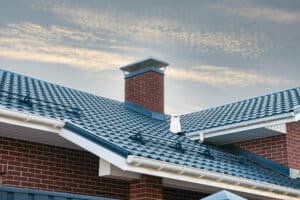UPVC fascia soffits have become increasingly popular for good reason.
They offer a compelling combination of style, durability, and functionality that makes them a standout choice for homeowners.
Let’s delve deeper into the specific advantages of UPVC fascia soffits and explore why they should be a top contender in your home improvement plans.
Key Takeaways
- UPVC fascia soffits are highly durable and require minimal maintenance.
- They resist damage from rot, warping, and cracking.
- UPVC fascia soffits are a cost-effective solution.
- They protect your home from the elements.
- UPVC fascia soffits improve energy efficiency.
- They enhance your home’s appearance.
- UPVC fascia soffits offer a variety of colors and styles.
- They mimic the look of wood without the maintenance.
Is UPVC Fascia Soffits Durable?
UPVC fascia and soffits are incredibly tough and resilient. They can withstand the harshest weather conditions, including heavy rain, strong winds, and intense sunlight, without showing signs of wear and tear. Unlike wood, which is susceptible to rot, warping, and cracking, UPVC remains strong and durable over time, eliminating the need for frequent repairs or replacements. This means you can enjoy peace of mind knowing your home’s exterior is protected without the hassle of constant maintenance.
Beyond their durability, UPVC fascia and soffits offer significant cost savings. By resisting damage and requiring minimal upkeep, they prevent the expense of frequent repairs or complete replacements, which can be costly. Furthermore, the long lifespan of these materials ensures you won’t have to invest in new fascia and soffits for many years to come.
In addition to saving you money, UPVC fascia and soffits contribute to the overall energy efficiency of your home. They create a tight seal around your roofline, preventing drafts and heat loss during colder months. As a result, your heating system won’t have to work as hard to maintain a comfortable indoor temperature, leading to lower energy bills.
Lastly, UPVC fascia and soffits enhance the aesthetic appeal of your home. Available in a wide range of colors and styles, these materials can complement any architectural design. Whether you prefer a traditional or modern look, you can find UPVC options that match your taste. Additionally, their ability to mimic the appearance of wood without the associated maintenance issues makes them a popular choice for homeowners seeking a low-maintenance yet attractive exterior.
How Is UPVC Fascia Soffits Low Maintenance and Easy Upkeep?
UPVC fascia soffits offer a low-maintenance solution for homeowners seeking to simplify their roof upkeep. Unlike traditional wood materials, UPVC is highly resistant to rot, warping, and cracking, eliminating the need for frequent painting or staining. Additionally, these materials are designed to withstand harsh weather conditions, protecting your home from the elements without requiring constant repairs. With a variety of color options available, UPVC fascia and soffits not only enhance your home’s protection but also contribute to its overall aesthetic appeal.
How Do UPVC Fascia Soffits Compare to Traditional Wood Options?
UPVC fascia and soffits are the unsung heroes of your roofline, providing robust protection against the elements while demanding minimal attention. They are the equivalent of a fortified wall, standing strong against the relentless onslaught of rain, wind, and sun that can wreak havoc on traditional materials. Unlike their wooden counterparts, which are susceptible to rot, decay, and the constant need for maintenance, UPVC remains steadfast and resilient.
Let’s compare the two:
| Feature | UPVC Fascia and Soffits | Traditional Wood |
|---|---|---|
| Longevity | Endure harsh weather conditions, requiring minimal upkeep. | Prone to rot, warping, and cracking, demanding frequent repairs or replacement. |
| Water Resistance | Impenetrable barrier against moisture, preventing water damage. | Vulnerable to water infiltration, leading to structural issues. |
| Maintenance | Low-maintenance, requiring occasional cleaning. | High-maintenance, requiring regular painting, staining, or sealing. |
| Durability | Resistant to damage from weather, insects, and other external factors. | Susceptible to damage from various elements, including pests. |
In essence, UPVC fascia and soffits offer a superior performance compared to wood. They provide long-lasting protection, require minimal upkeep, and contribute to the overall durability and aesthetic appeal of your home.
Why Is UPVC Fascia Soffits a Cost-Effective Solution?
UPVC fascia and soffits offer a cost-effective solution for homeowners seeking to improve their property. Their quick and simple installation reduces labor costs, while their exceptional durability minimizes the need for ongoing maintenance like painting or repairs. Designed to withstand harsh weather conditions, UPVC ensures long-lasting performance, reducing the frequency of replacements. Additionally, the material’s recyclability contributes to environmental sustainability. By choosing UPVC, homeowners can enjoy the benefits of a durable, low-maintenance, and eco-friendly roofline without breaking the bank.
Does UPVC Fascia Soffits Enhances the Aesthetics of Your Home?
UPVC fascia and soffits offer a fantastic way to enhance your home’s exterior while increasing its value. With a variety of color options available, you can effortlessly match or contrast your home’s aesthetic, creating a striking curb appeal.
The beauty of UPVC lies in its ability to replicate the classic charm of wood without the associated maintenance headaches. This means you can enjoy the timeless appeal of wood-look finishes while benefiting from the durability and longevity of UPVC.
Investing in high-quality UPVC fascia and soffits is a smart financial decision. These components not only elevate your home’s appearance but also contribute to its overall value. Potential buyers are often drawn to properties with well-maintained exteriors, making UPVC a worthwhile investment.
Frequently Asked Questions
What Are the Benefits of UPVC Fascias and Soffits?
UPVC fascias and soffits come with a bunch of perks that homeowners love. They’re a breeze to put up, hardly need any upkeep, and they’ll keep your roof and walls safe for years. Not only are they tough as nails and won’t break the bank, but they also look good and give your house some serious curb appeal.
What Are the Benefits of PVC Fascia Board?
PVC fascia boards are a real game-changer for homeowners looking for a hassle-free option. They’re light on your wallet and heavy on benefits. You won’t have to spend your weekends maintaining them, and they’re tough as nails, so they last ages. They come in all sorts of looks, so finding one that fits your house’s vibe is a breeze. And guess what? PVC soffits are just as cool. They protect your house like a champ and make it look sharp too.
Is UPVC Fascia Better Than Wood?
Let’s talk about UPVC fascia and how it stacks up against traditional wood. Right off the bat, UPVC is a winner for folks who aren’t into a lot of upkeep. It’s tough as nails, so it doesn’t give in to rot or bugs, which is more than you can say for wood. Plus, it’s friendly on the wallet, comes in a bunch of different colours, and doesn’t make your energy bill go through the roof.
In a nutshell, if you want something that’s going to last without breaking the bank or requiring constant attention, UPVC fascia is a smart pick. It’s like choosing a car that doesn’t need oil changes every few months – it just keeps going without a fuss. And in a world where we’ve all got a million things to do, that’s a pretty big deal.
Is PVC Good for Soffit?
When you’re thinking about using PVC for soffits, there’s a lot to like. It’s tough, doesn’t ask for much upkeep, and won’t break the bank. But it’s always smart to weigh your options and see how PVC stacks up against other materials before making a final decision for your project.
